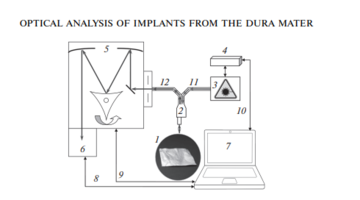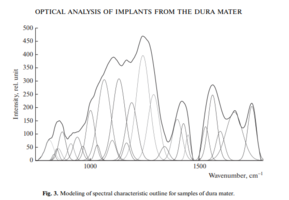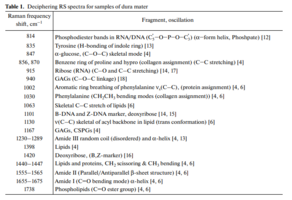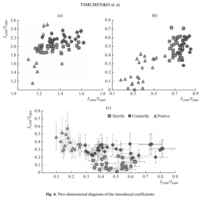+7 (929) 727 53 60 Травматология / Ортопедия
Optical analysis of Implants from the Dura Mater
P. E. Timchenkoa, E. V. Timchenkoa, *, L. T. Volovab , M. A. Nosovab , O. O. Frolova , N. K. Kiykoa , and N. V. Volovb aSamara National Research University, Russia b Samara State Medical University, Russia *e-mail: laser-optics.timchenko@mail.ru Received September 5, 2017; in final form, December 30, 2017In modern dentistry, the problem of restoring the tissues of atrophied gums, both in the region of the exposed neck of the teeth, and in the case of adentia, is extremely urgent [1].
Presents the results of the spectral analysis using the method of Raman scattering spectroscopy (RS) of dura mater (DM) samples, manufactured by technology “Lioplast” practised in the clinic in the area of atrophic processes at multiple gum recessions. The method of Fourier deconvolution and selection of the spectral profile by the method of least squares is used to increase the resolution and informativity of the spectrum. With the help of mathematical methods of separation of overlapping spectral contours, the main bands corresponding to the main components of the implants were found: amides, proteins, glycosaminoglycans, DNA/RNA. On the basis of the two-dimensional spectral analysis, the coefficients reflecting the composition of the dura mater with different methods of its treatment were introduced. It has been established that Raman spectroscopy can be used to evaluate implants from the dura mater. Keywords: Raman spectroscopy, dura mater, biomaterial, spectral analysis, Fourier deconvolution, modeling of the spectral contour DOI: 10.3103/S1060992X18010101
-
Базовый список трудов Воловой Л. Т. (Самара)
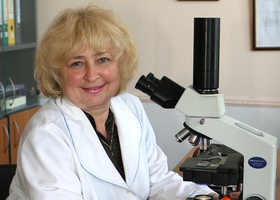 Статьи и патенты
Подробнее
Статьи и патенты
Подробнее
-
Аллогенные материалы в стоматологии — назад к природе?
 - У Вас зубы свои или протезы?
- Пожалуй свои, из натуральных имплантов... (Из подслушанного разговора).
Подробнее
- У Вас зубы свои или протезы?
- Пожалуй свои, из натуральных имплантов... (Из подслушанного разговора).
Подробнее
-
Научные статьи в журналах
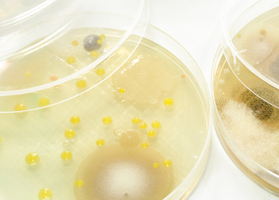 Библиотека PDF-документов с текстом научных статей в жирналах и в электронных ресурсах. Файлы доступны для просмотра и скачивания на компьютер пользователя
Подробнее
Библиотека PDF-документов с текстом научных статей в жирналах и в электронных ресурсах. Файлы доступны для просмотра и скачивания на компьютер пользователя
Подробнее
-
Оценка влияния остеопластических материалов на регенерацию костной ткани после операции цистэктомии
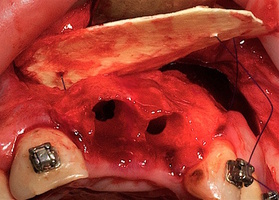 Оценка влияния остеопластических материалов на регенерацию костной ткани после операции цистэктомии с одномоментной резекцией верхушки корня зуба с помощью компьютерной томографии
Подробнее
Оценка влияния остеопластических материалов на регенерацию костной ткани после операции цистэктомии с одномоментной резекцией верхушки корня зуба с помощью компьютерной томографии
Подробнее

